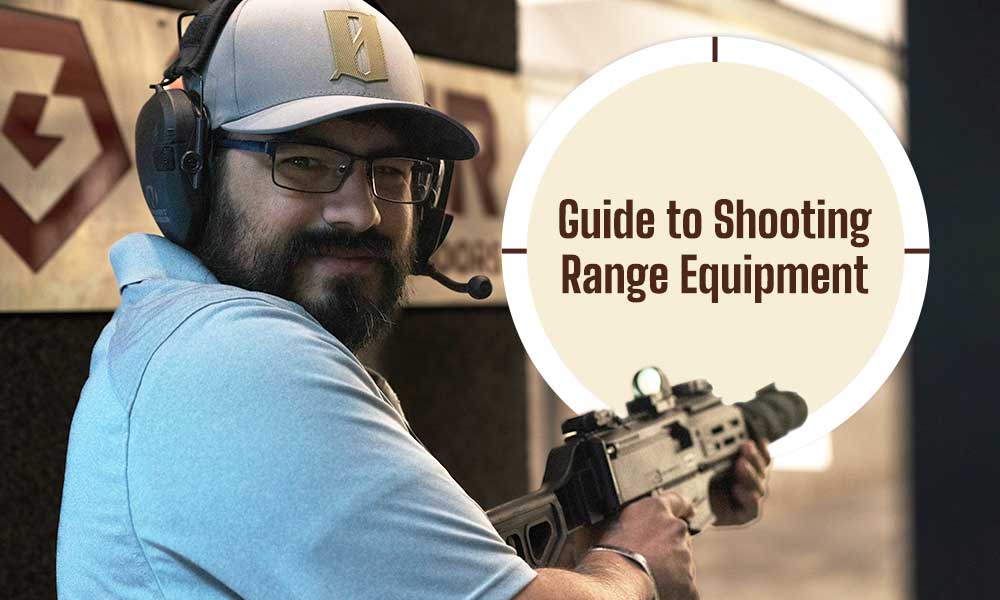If you’ve ever been to a shooting range, you can imagine how much is going on before, during, and after live firing. It’s a place where order rules over anything else, for safety is the main priority. The well-being of range visitors and range personnel is achieved not only by understanding and following the rules but also by using operational equipment. We at GRITR Range spare no effort to provide our visitors with well-maintained range gear. Our retail store is also replete with shooting range equipment for those willing to carry their own gear. However, with possession comes responsibility: to clean, maintain and fix. Functional equipment is one of the mainstays of an enjoyable shooting experience. In this guide, we’ll cover what range gear you’ll need for a day on a lane, how to use it safely and properly, and how to keep it in good condition.
Table Of Contents
Shooting range Equipment
Safety Gear
Hearing Protection
Eye Protection
Targets
Firearms and Ammo
Firearms
Ammunition
Storage
Range Bags
Cases and Holsters
Cleaning Kits
Range Equipment Maintenance
Conclusion
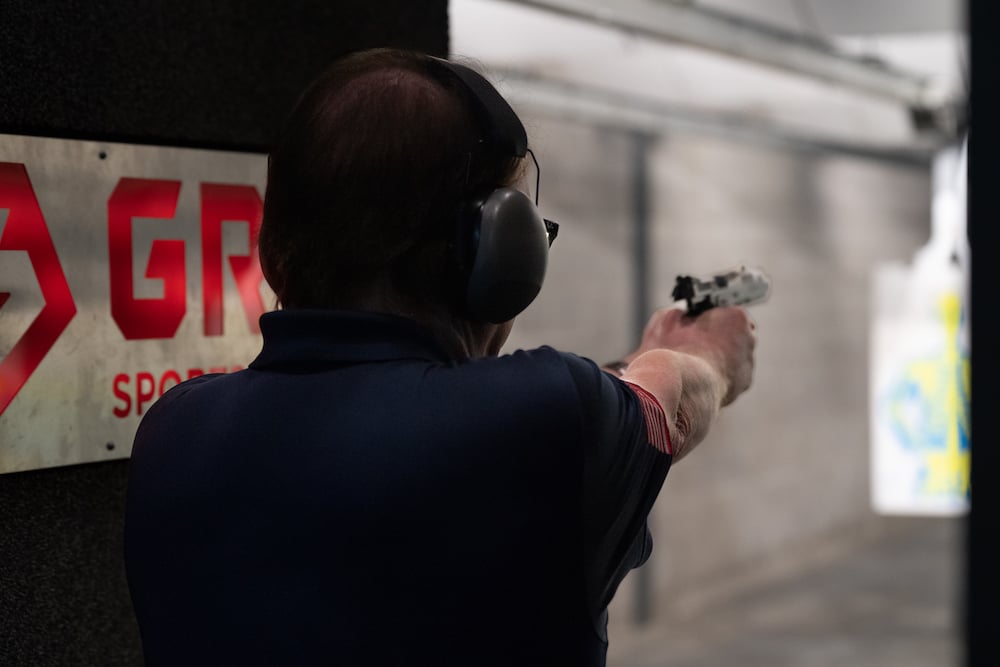
Shooting Range Equipment
First and foremost, we care about your safety and hope you do too. For that reason, all the items we’re about to mention can be obtained right at the range counter or a retail store, including eye protection and hearing protection. Some things, like holsters and gun cases, remain your responsibility. Here’s our range equipment checklist.
Hearing Protection
They don’t show this in movies, but firearms are quite loud. Excessively loud, to the point where prolonged exposure to the sound of fired shots is bound to cause long-term hearing problems, potentially leading to hearing loss. Hearing problems will inevitably start troubling everyone sooner or later, but it is within our power not to expedite that moment. Thus, hearing protection is, without exaggeration, a must, and we require all range visitors to wear it at all times while in the range. In case you don’t have any, a set of earmuffs will be provided to you. Should you become interested in owning your own piece, here’re the hearing protection options.
Earmuffs
Earmuffs are one of the standard hearing protection options: they are easy to wear and are very versatile. You don’t need any special knowledge to wear them since they don’t change in shape or size and don’t need to be fitted specifically to you. They take a sec to put on and off. But there is one drawback to earmuffs: they cannot provide superior hearing protection. Your ears are covered, but your ear canals remain open. Earmuffs might also cause discomfort when worn for extended periods in hot climates. Wearing a helmet or goggles might further decrease their protective qualities since they stop sitting snugly on your ears. The gap between earmuffs and earplugs varies from model to model, sometimes being as much as 10 dB and sometimes hardly reaching 1 dB. The highest Noise Reduction Ratio available for earmuffs is 31 dB.
Among all hearing protection options, only earmuffs can boast intricate electronic variations. Such devices are capable of determining the volume of sound and selectively block everything that exceeds a set limit. That means you don’t need to take them off to hear what other people say – such sounds won’t be suppressed. However, they tend to be pricier than regular variants.
Earplugs
Earplugs are the second prominent choice for hearing protection. Most people prefer to remain on either end of the spectrum, so there are few in-betweens. Earplugs outperform earmuffs by only 2 decibels, but that is enough to conclude that they provide superior hearing protection. Earplugs come in two forms: disposable foam plugs and multi-use earphones. Both are not without their peculiarities, though.
Earplugs are inserted directly into the ear canal. If you want to get the most out of them, you’ll need to find earplugs that fit your ear canal in particular. In addition to that, not everyone feels comfortable wearing this sort of ear device. But earplugs make up for these inconveniences with other benefits, in addition to superior hearing protection. They are very compact, and their protective qualities don’t suffer if you put on a helmet or goggles.
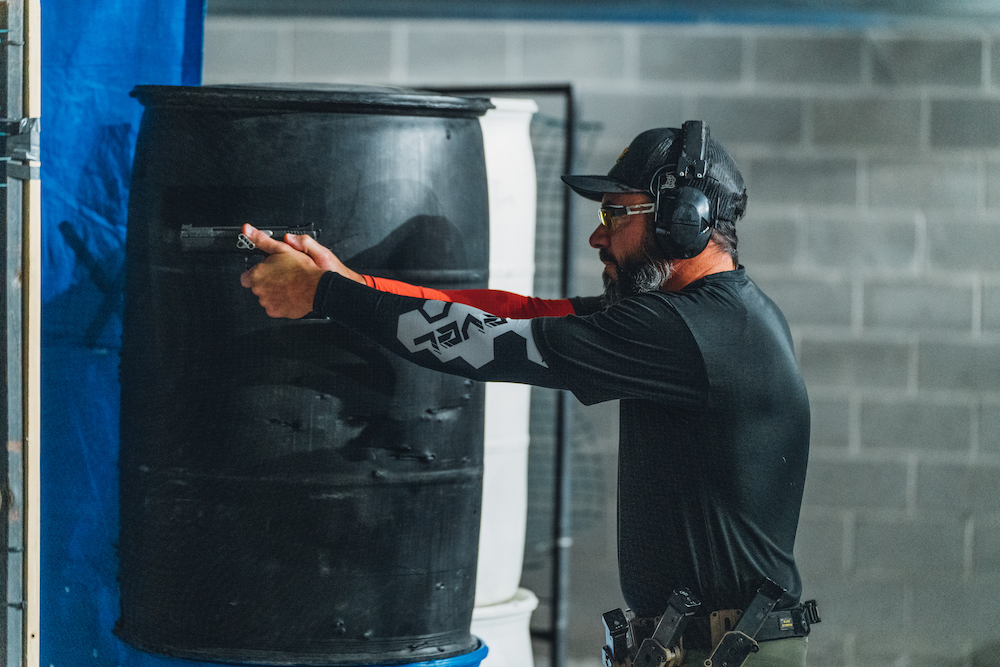
Eye Protection
Eye-related injuries on shooting ranges are extremely rare. But they are not inexistent. Such issues used to be common with prototype firearms, yet they sometimes trouble modern guns too. Every now and then, some firearm fails in an unexpected way, way more destructive than failure to feed. Pieces of parts may fly in all directions, including one that leads to someone’s eyes. Ricochets can do the same thing. We won’t even try to calculate the odds of any of this happening – the number would be incredibly low. But when your eye is at stake, it’s better not to take odds at all.
Shooting glasses perform several functions, and each element of their design illustrates this fact. Many shooting glasses feature particularly durable, impact-resistant frames and lenses that prevent any projectile from hitting you in the eyes. The lenses are often colored to provide contrast, handy for target shooting. UV protection is another benefit that shooting glasses grant to their wearer.
Targets
The shooting range is all about target shooting. As you can imagine, the number of targets you can shoot in one session is limited only by your desire and dedication. Besides, the variety of targets alone is a plausible reason not to delegate picking to anyone else. Paper targets are the most suitable type for a range with a constant circulation of people. We encourage shooters to bring targets they’ll enjoy shooting.
Paper targets might not sound like the most thrilling type out there, but they are far from boring either. You may opt for conventional disposable paper targets with a pattern for bullseye shooting or their “splatter” variants that highlight points of impact with vivid colors. Our sports equipment store Gritr Sports has all kinds of targets for every taste and color.
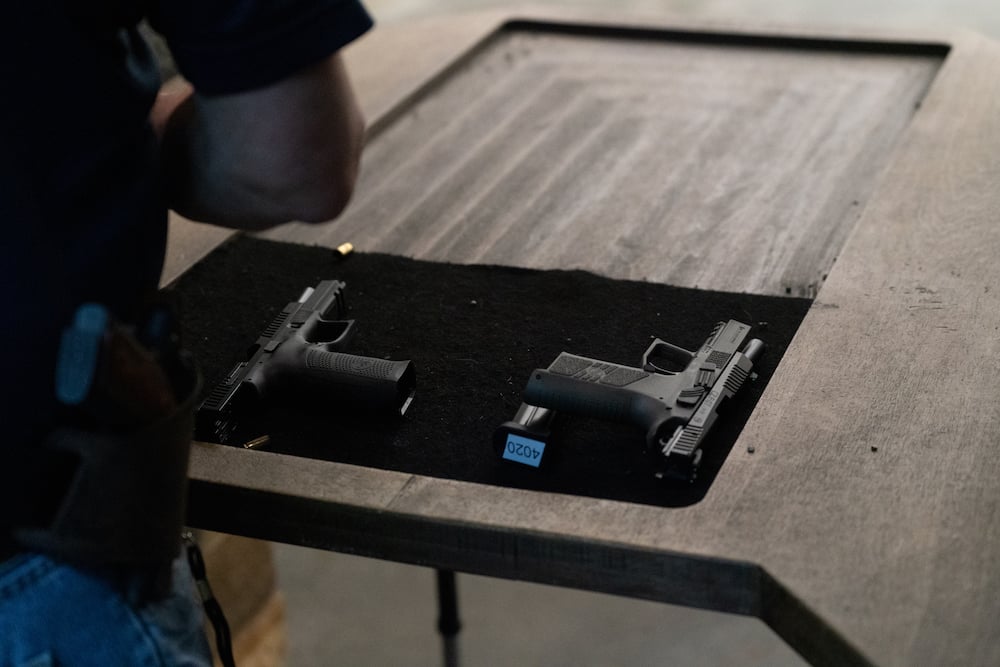
Firearms and Ammo
The key components of every shooting session, guns and rounds, are not, strictly speaking, range gear. However, there is no shooting without firearms and ammunition, so don’t frown upon our decision to include them in the list. Besides, there are several things you need to know about firearm and ammo regulations that work on our range.
Firearms
We’re an indoor range, so shotguns are not allowed under normal circumstances. We welcome shooters with rifle calibers up to .308 Winchester or .30-06 Springfield and handgun calibers up to .50 American Eagle. All rifles should be equipped with either sights or optics and have a stock or brace. All firearms must enter and leave the building unloaded, stored in either a case or holster.
We understand how important it is for everyone to train with a firearm of their own picking. For that reason, every gun that complies with the abovementioned regulations and passes the inspection of one of our range instructors can be taken to the range. If you are new to firearms or don’t have a gun on your person upon arrival, we have a selection of rifles and pistols for rent.
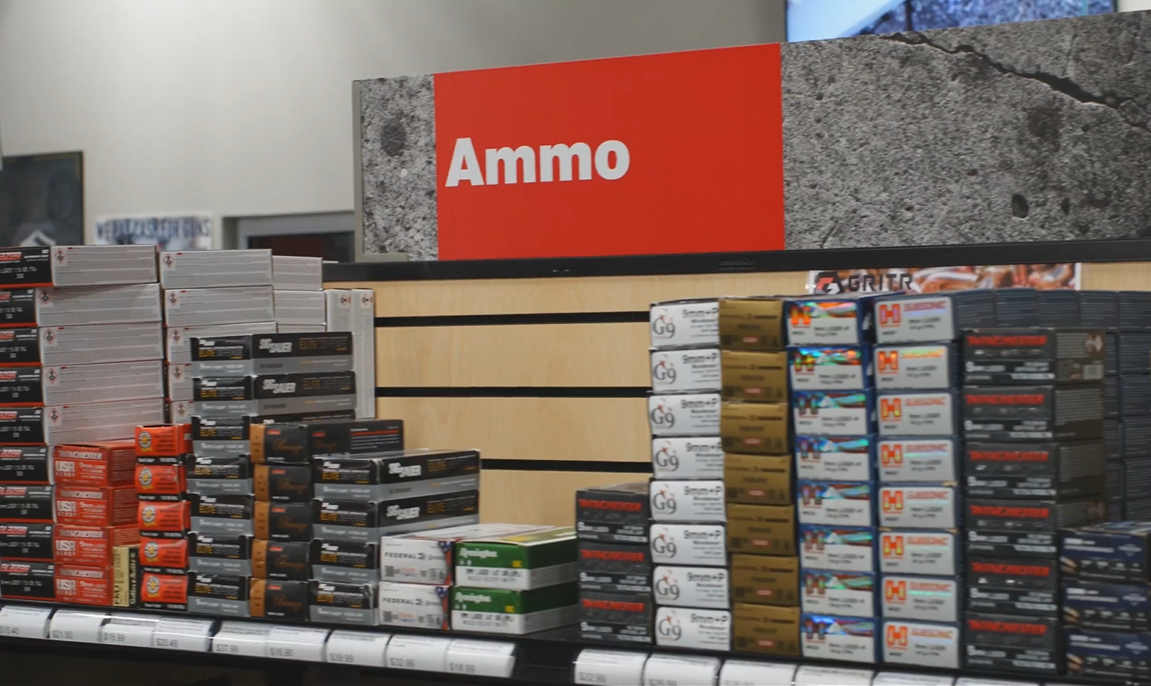
AMMunition
You are more than welcome to bring ammunition of your choosing. But we ask you to check whether it is not on our restriction list. We don’t allow steel-core, steel bullet, bi-metal jacket and reloaded ammo, green-tips, tracers, and other rounds that could potentially inflict significant damage to our range. Other ammunition is good to go, including a full metal jacket. Should your ammo not pass the inspection, we have a selection of popular ammunition right behind our counter, with more items available on our retail shelves.
Storage
We can’t imagine an outfit with pockets big enough to fit all the pieces of equipment that we’ve mentioned. A regular backpack could possibly accomplish such a task, but its compartment configuration is not optimal for storing such varied items as paper targets, earmuffs, and ammunition. Throwing your handgun into the brew makes for another poor idea: firearms should be stored in dedicated containers, even outside shooting ranges. The importance of transportation containers shouldn’t be underestimated.
Range Bags
Range bags are known for their many compartments that don’t allow different items to collide during movement. You can comfortably store magazines, eye and hearing protection, paper targets, and handgun cases. Having a dedicated range bag saves you the headache of packing and unpacking the backpack for various purposes.
Cases and Holsters
Storage plays a major role in maintaining firearms condition. Or in deteriorating it. Poor storage conditions will quickly take a toll on your gun’s well-being, and that you don’t need. Besides, carrying firearms in specifically designed holsters and cases is a very considerate, non-threatening way of transportation. For that reason, we require all firearms brought into the building to be either holstered or cased.
Сleaning Kits
It happens every now and then that firearms need cleaning. Residue and dust that accumulate over time, dirt that occasionally finds its way onto the surface of your firearm – you name it. Of course, conducting the cleaning ritual at home is more relaxing than polishing your gun in the line. But emergencies never ask whether you feel prepared and are in good spirits. Having a smallest cleaning kit with the most basic tools will come in handy in those rare cases when you do need to clean a firearm “in the field”.
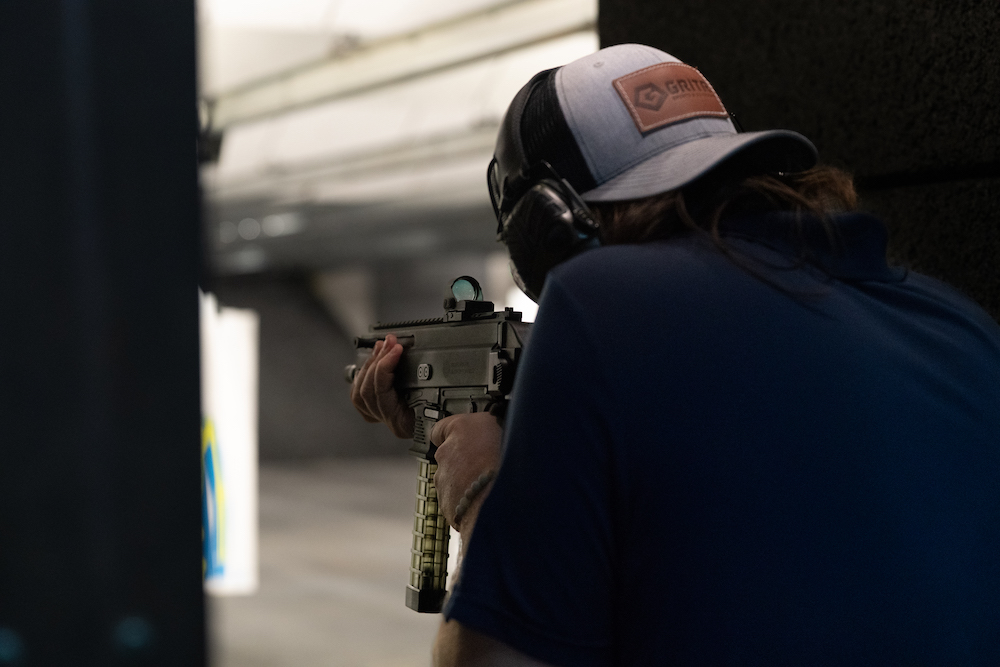
Range Equipment Maintenance
After having passed the trouble of picking the items you need from hundreds of look-alikes, you can finally enjoy the moments of using them. But the story never ends there. Gear needs maintenance, especially if you plan on using it often. Some items cannot be maintained, like ammunition and shooting targets. If something can be saved with cleaning and care, we believe it should be saved.
Of all the items you can take to a shooting range, firearms and magazines need your care the most. There is really not much you can do about earmuffs and shooting glasses – they are not demanding in terms of maintenance. Magazines require cleaning after a bit of use, but nothing is as important as maintaining your firearm.
Three simple reasons make gun cleaning an obligatory activity for responsible firearm owners. It ensures your gun remains safe to shoot, maintains the performance bar high, and secures the money you’ve invested into the firearm. As simple as that. If those reasons are not enough, then add bonding with your gun into the bundle.
Since this is not a gun cleaning guide, we won’t elaborate on how to clean rifles and handguns. What we will say, though, is that regardless of whether the firearm you are using in the range is your own or a rented one, it should be handled with care. The same applies to any range equipment you are renting and using, including range keys, line tables, and other equipment.
Conclusion
The proper use of shooting range equipment is indispensable for the most enjoyable shooting experience. We have everything you might need for a day at the range, but you are welcome to bring your own gear. Our range staff will check whether every piece of your equipment is functioning and in good condition and offer you a temporary replacement should anything fail to pass the inspection. Remember to carefully use shooting range gear, yours and ours, and adhere to safety rules – they are established to keep everyone safe and sound. See you at the GRITR Range!

